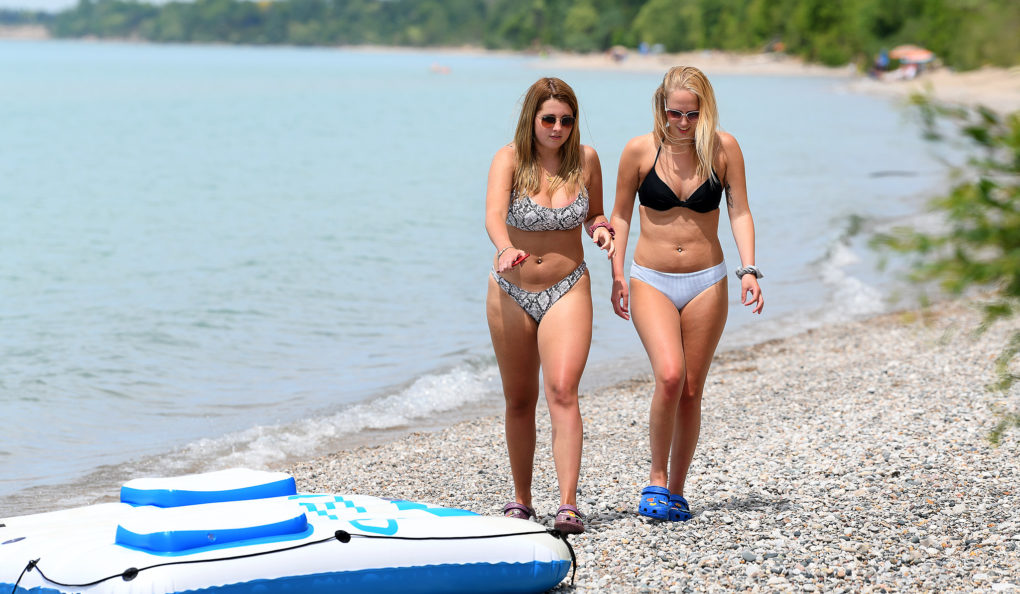Self-Care – Buttock Pain with Stiff Low-Back
Table of Contents
- Activities to Avoid or Change
- For Temporary Relief
- Stretches and Exercises for Longer-Lasting Relief
- Yoga Corner
Here, you will find self-care strategies for relief from pain in your buttock with a stiff low back. for more information about how people describe this pattern look at this other post.
Activities To Avoid or Change:
Sudden Twist
Avoid precarious positions that may lead to twisting falls, especially when the fall leads to a blow to the back. These include walking on ice, reaching up and back to a shelf, or walking on slippery surfaces. This is the most common onset of this condition.
Repetitive Twisting and Bending to One Side
This is more common in older patients. Repetitive uneven movements like walking with a badly fit cane aggravate this trigger point. Additionally, yard work, like tossing bales or digging with a shovel, can cause this to flare up. Finally, vacation activities like beach walking or a low railing on the steps to your mountain top guru can be an irritant.
Avoid Heating Pads
Heating pads feel great and offer quick relief. Unfortunately, they bring inflammation and, usually, create a worsening condition. You’ll notice that the pain is worse about 2 hours after using the heat pack. I’ve seen this many times with patients. When I get them to stop the heat, they make better progress.
For Temporary Relief:
These patches offer great relief. If this is a minor irritation, they may loosen the underlying joint problems.
Place it on the Trigger Point
This trigger point, and several like it, are around the base of your ribs and the top of your hips.
Place your patch just where it is in the picture, maybe a little to the side that hurts. First, feel for the space between the crest of your hips and the lower ribs. Then, place the patch over the stiff muscle in this area.
I know that you want to place it on your hip but try this first. It’ll stay on better and help the trigger points in this area that create similar pain. It will offer better overall relief.
These self-care activities, like over-the-counter drugs, are not intended to replace appropriate medical attention. If you have concerns about these self-care activities, get help from a professional. Use these suggestions and strategies with discretion and at your own risk. See your doctor when your pain is severe, persistent, or not responding to these simple suggestions.
Stretches and Exercises for Longer-Lasting Relief:
Here are a few exercises that really help. Ice-and-stretch or the pain patch listed above can really help. In fact, they make these stretches make them easier and more effective.
Open from Side to Side
Simple stretches like this are effective for opening your low back.
For a better result gently open your back with this stretch for about 2 seconds. Just stretch to the point of slight tension. Return to standing straight before stretching again. Do about 20 of these repetitions. If you’re doing it right, without too much force, you’ll make steady progress with each repetition.
Flex and Extend or Cat/Cow
Classic exercises like the Cat/Cow can help loosen this area. In addition, the arching of your back, while on all fours, tends to free up joints and relax muscles while they are not being used to support your weight.
Supine Twist
This is a great way to open the low back. Use the position of the foot on the table to target the low back. For more details, read the post.
I’d love your feedback on how this works for you and any suggestions you might have.
Email me at integrativeworks@gmail.com.
Yoga Corner
Focus on Stability and Opening Your Core
Exercises like this extended side angle help to lengthen the iliocostalis lumborum without teetering.
In addition, seated and lying spinal twists are effective. The focus here is to open the core while remaining stable. As noted above, the cat/cow is a great choice too.
Avoid Quick Shifts in Balance
Avoid those one-legged poses for a while. Consequently, the quick adjustments in balance will aggravate this trigger point. Also, bridges can be a problem. They can tighten this area. If you do them, follow with the low-back openers that are recommended here.
Support Integrative Works to
stay independent
and produce great content.
You can subscribe to our community on Patreon. You will get links to free content and access to exclusive content not seen on this site. In addition, we will be posting anatomy illustrations, treatment notes, and sections from our manuals not found on this site. Thank you so much for being so supportive.
Cranio Cradle Cup
This mug has classic, colorful illustrations of the craniosacral system and vault hold #3. It makes a great gift and conversation piece.
Tony Preston has a practice in Atlanta, Georgia, where he sees clients. He has written materials and instructed classes since the mid-90s. This includes anatomy, trigger points, cranial, and neuromuscular.
Question? Comment? Typo?
integrativeworks@gmail.com
Follow us on Instagram
*This site is undergoing significant changes. We are reformatting and expanding the posts to make them easier to read. The result will also be more accessible and include more patterns with better self-care. Meanwhile, there may be formatting, content presentation, and readability inconsistencies. Until we get older posts updated, please excuse our mess.

